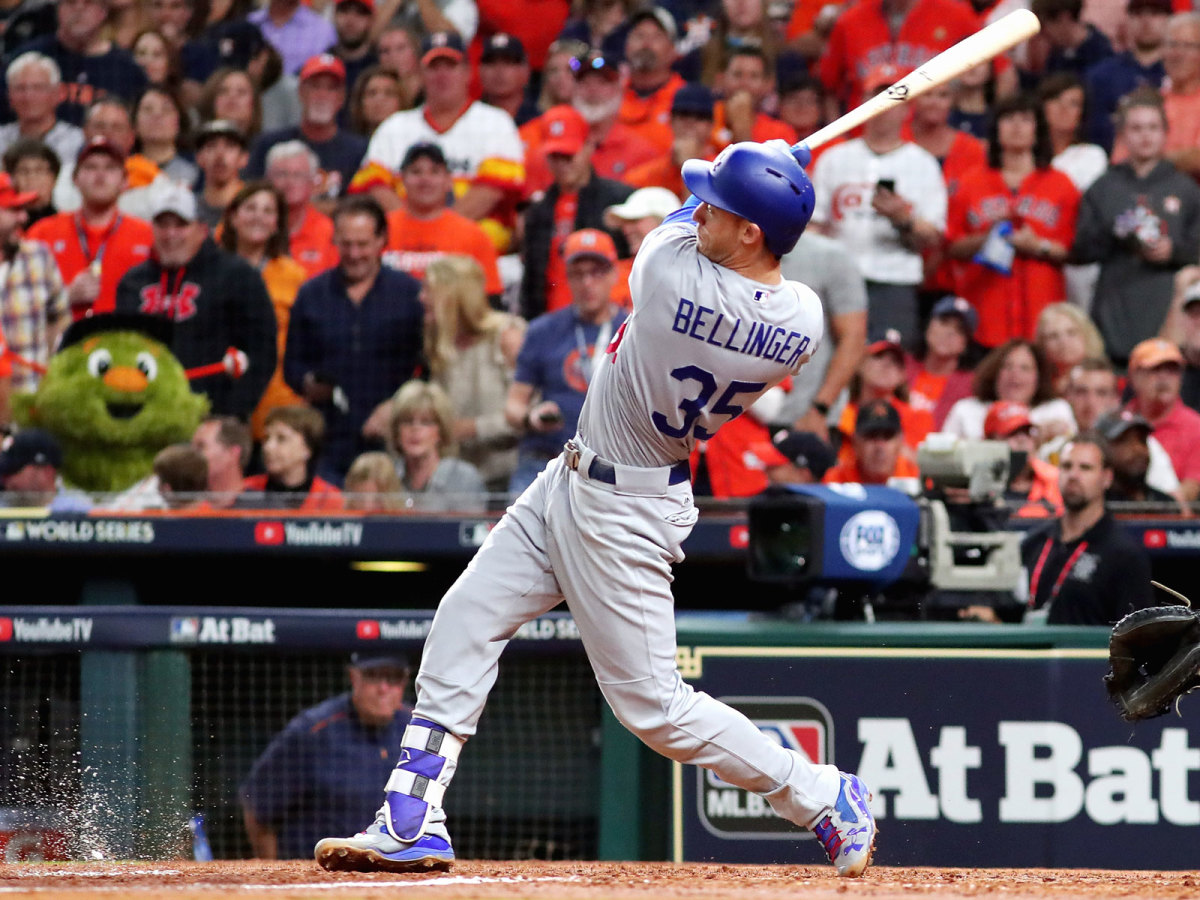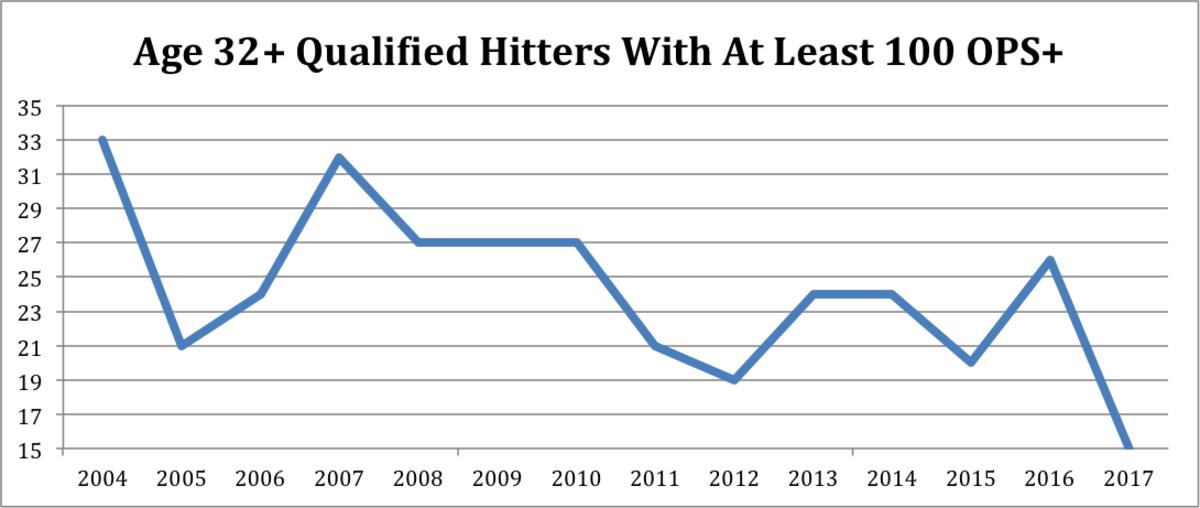Jay Bruce's Thin Free Agency Market Proves Baseball Is a Young Man's Game

There was a time when a 30-year-old, lefthanded, proven power-hitting corner outfielder like Jay Bruce (277 HRs, 838 RBI) was the star of free agency. That would be 1976, when Reggie Jackson (281 HRs, 824 RBI) signed with the New York Yankees after owner George Steinbrenner wined and dined him.
“It was like trying to hustle a girl in a bar,” Jackson said at the splashy introductory press conference to announce his three-year, $5 million deal—the biggest in baseball.
More recently, in walk seasons that resemble the one Bruce just had (.254, 36, 101), 30-year-old Jason Bay (.267, 36, 119) pulled in $66 million over four years in 2009 and 31-year-old Nick Swisher (.272, 24, 93) garnered $56 million over four years in 2012.
Bruce? He may want Dexter Fowler money (five years, $82.5 million), but MLB Trade Rumors estimates he gets $39 million over three years. That’s Shane Victorino money from five years ago.
What the heck happened? How come as revenues continue to soar the money for free agent power hitters in their 30s has cratered? That cold truth hit the likes of Edwin Encarnacion, Jose Bautista, Mark Trumbo and Kendrys Morales last year.
The Reiter 50: J.D. Martinez, Yu Darvish, Jake Arrieta Among MLB's Best Free Agents
This year, in addition to Bruce, who will play next season at age 31, the revised baseball actuarial tables will hit Lorenzo Cain, Todd Frazier, Carlos Gonzalez, Lucas Duda, Carlos Santana, Carlos Gomez and Zack Cozart, all of who will play next season at age 32. Deals of at least four years will be hard to find, if at all.
Here’s why this is a bad time to be a free agent position player advancing into your mid-30s:
1. Home runs are devalued.
Clubs don’t need to pay a premium on the open market for home runs because they are too easy to find. The young generation of hitters has been trained to hit the ball in the air, strikeouts be damned, and, with the help of a livelier ball the past 2 1/2 seasons, they are doing it quite well, thank you.
Look at the growth in home runs this way: we all know home runs are up, but very young hitters (those not yet eligible for free agency) are largely driving the surge. MLB set an all-time record for most home runs in a season this year. Teams broke the previous record, set in 2000, by 7.2%. But in comparing those two top home-run hitting seasons of all time, the number of home runs hit by players 25 and younger went up 55%.

Until this year, there never had been a season with more than six rookies who hit 20 home runs. Ten did it this year, including all six of the Rookie of the Year finalists. Gary Sanchez, Trevor Story, Aaron Judge, Cody Bellinger, Rhys Hoksins, Matt Olson, Joey Gallo, Paul DeJong … over the past two years we’ve seen a parade of instant sluggers hit the big leagues, and the intersection of the lively ball and modern hitting techniques assures more are coming. With this ball, teams can project their best prospects can slug at a higher rate in the majors than the minors.
Back to Reggie for a moment. Bruce and Jackson have their similarities at this age—even freakishly so. Bruce has 2,455 total bases, for instance, while Jackson had 2,438 when he hit free agency. Bruce has 1,294 hits; Jackson had 1,292. But you just didn’t find many power hitters in the 1970s like Jackson. When you look at adjusted OPS, which measures a player against his peers and considers ballpark effects, Bruce (110) actually is far short of Jackson (150).
2. Defensive shifts
No type of player has been harmed more by the growth of defensive shifts than lefthanded pull hitters without speed—hitters exactly like Bruce. Using 2012 as a dividing line when shifts began to become mainstream, you can see the effect on Bruce: he hit .261 on ground balls before then, and .223 since; he hit .365 on balls in play to the pull side before, and .306 after. He is losing about a dozen hits per year due to data that shows teams where to defend him.
We don’t have data before 1988 on where players hit the ball—neither did clubs, really, which is why Jackson did not see the kind of shifts Bruce sees every day.
3. It’s a young man’s game
Here is your true bottom line. We’ve seen two major shifts in the past 15 seasons toward skewing the game younger. The first occurred in 2003, when testing for performance-enhancing drugs began, first as survey testing and in the subsequent years as testing with penalties. Before 2003 teams could hand out contracts that paid players well through their late 30s because steroid use extended careers.
The next shift has occurred in the past three seasons, for a variety of reasons. Among them: an increase in velocity on the mound has placed a premium on younger muscles that fire quicker; more roster spots dedicated to relievers has increased the need for players who play multiple positions, which favors younger legs; and advanced training techniques and technologies that allow young hitters to impact the game more quickly. Of course, advanced information available to front offices has underscored that young players are more cost effective and less injury prone.
Yu Darvish is Baseball's Best Free Agent, but Memories of His World Series Collapse Are Fresh
With the flood of 32-year-old hitters on the free agent market right now, it’s a good time to take a look at the graph below. It shows you how rare it has become for any hitter that age and older to even be an average contributor.
Consider an OPS+ of 100 to be average. What this chart measures is the number of qualified hitters age 32 and older who were at least average. What’s striking is that in 10 years, from 2007 to 2017, the number of reliable such veterans has been cut by more than half, from 32 to 15.

Yes, David Ortiz retired, but the dropoff this year also included the likes of Miguel Cabrera, Adrian Gonzalez, Curtis Granderson, Victor Martinez, Mike Napoli, Angel Pagan, Dustin Pedroia and Ben Zobrist, hitters who either could not stay healthy or productive.
Here’s some historical perspective on the demise of the veteran hitter. The 15 age 32+ qualified hitters this year with an OPS of at least 100 were the fewest in a generation—since 1988, when there were four fewer teams.
Someone watching baseball in 1901, with only 16 teams, saw more such good veteran hitters (16) than someone watching in 2017, with 30 teams. So much for the advancements of nutrition and training over the past hundred years to extend careers.
The landscape in recent years for veteran free agent outfielders is riddled with poor contracts. In the just the past five seasons, clubs gave contracts of four or more years to Swisher, Michael Bourn, Angel Pagan, Josh Hamilton, Curtis Granderson, Shin-Soo Choo, Jacoby Ellsbury, Nick Markakis, Alex Gordon, Dexter Fowler, Yoenis Cespedes, Ian Desmond and Josh Reddick.
This year Bruce is one of several hitters who bring a solid track record and good power numbers to the market. But if the market continues the trend from last year, it will be a market that is reluctant to pay for home runs and age.
